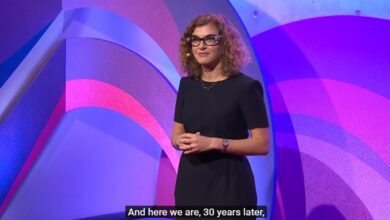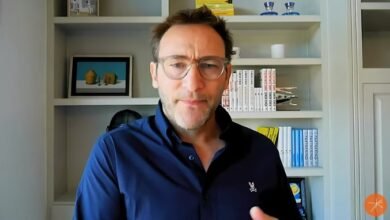What are the differences between inbound and outbound marketing campaigns?

By | John Preston
Inbound and Featured Marketing are methods of promoting your services and products. However, they differ in many ways when creating a campaign. Knowing the differences between them can help create a good mix of inbound and outbound marketing tactics.
What is outbound marketing?
Featured marketing is any form of marketing that targets broad groups of people based on their demographics, general interests, or even sticks with ads for a particular product or service.
Most traditional advertising activities, including television ads, radio ads, direct mail, brochures, billboards, newspaper ads, cold calling, telemarketing, and event sponsorships, fall into this category.
Featured marketing can also be found within digital advertising, such as some banner ads, YouTube video ads, email marketing to purchased lists, and social media ads. However, with display, YouTube, and social media ads, there are ways to better target them so they also fall into the inbound marketing category.
What is Inbound Marketing?
Inbound marketing is any form of marketing that helps your business and products be found by people already searching for your product or industry, based on keyword searches, in-market or intent audiences, or remarketers who have already visited your website. This can be through actions such as local listings (Yellow Pages, Yelp, Google My Business), search engines (both SEO and PPC), subscription-based email marketing, content marketing, webinars, blogging and vlogging, social networks and website optimization.
Inbound marketing can also be done through traditional sources, such as networking at industry trade shows, hosting conferences or seminars on topics related to your products. Your audience is already interested in your product and you are engaging them as thought leaders in your industry.
What are the differences between each type of marketing?
Outbound marketing is spreading your message to a large group of people, hoping that some of them might be interested in your product and convert. It’s interruption-based, which means ads need to stand out because they’re not the main focus of what your audience is consuming. You are taking the consumer out of your TV show or reading to try to get them to buy your product in a few seconds. Bright, bold, shocking and disturbing advertising is rewarded for how it helps you get noticed.
Inside Marketing is spreading your story to people who are already interested in your product(s). They may just be researching your product for now, or almost ready to buy. You gain the interest of users with this type of advertising. It’s permission-based, which means your content is the focus of what your audience consumes. Telling stories and creating great content is rewarded by how it presents you as a thought leader in your industry.
What resources are needed for each type of marketing?
Outbound marketing requires more visual creative resources to create videos, banners, print and radio ads that stand out and get the message across quickly. Campaign creation is usually easy, but advertising costs can be high, depending on the platform and the competition. For example, a TV commercial during the Super Bowl in the United States will cost millions of dollars, but banner ads with millions of impressions may only cost $3. Generally, more targeted ads will cost more than less targeted ads.
Inbound marketing requires more creative resources to create website content, blogs, organic social media posts, and more to create a hub of quality content in your industry. Some visual creativity is also needed for the website, social media and some ads, but the focus is on long-form content. Since you’re reaching a much smaller audience (one that’s much more likely to convert), your ad spend may be less than with outbound advertising. And most of the focus will be on organic marketing, as opposed to paid ads. Inbound marketing also requires a great website, with a focus on ease of use and conversions, to move people from researching to converting.
What is the best type of marketing?
Inbound marketing has many advantages. The conversion rate for inbound marketing is 759% higher than outbound marketing. You are targeting a group of people who are already interested in your products and doing research. However, inbound marketing can be extremely competitive. If you already have competitors with strong content and authority online, it can be difficult to get your voice heard organically.
You may still be able to find content gaps or new niches to show your value. And consumers are more likely to click on content from brands they recognize. With this in mind, it pays to build brand awareness in the industry at large.
Ideally, you could just rely on inbound marketing for new customers, but in most industries, that’s not always realistic. There are limitations to the number of people you can show your website and content to while they search for your product right away.
Most businesses need to use a mix of inbound and outbound marketing to fill their sales funnel. The percentages depend on your industry and where your audience spends their time. If you have a gas station on the interstate, a billboard may be the best advertisement for your business. This is outgoing advertising.
However, if you have an online e-commerce business, shopping ads and Amazon ads will probably get the most return, which is inbound advertising. With 88% of consumers searching for products online before purchasing, it is critical that businesses can be found online and have a good website experience.
Outbound marketing can be a good way to build brand awareness in general so that when people start looking for your products, they recognize your brand as an authority in your field. However, in most cases, it should be a small part of your advertising approach. The majority of your resources should go into inbound marketing efforts, both organic and paid ads, targeting people who are already interested and searching for your product.
Data should be the main determinant of where you spend your marketing resources. However, while bottom of the sales funnel marketing is often easy to attribute, traditional outbound marketing and top of the funnel marketing can be difficult to measure with analytics data.
What does a good mix of inbound and outbound marketing look like?
As an example, let’s say you’re the marketing manager for a nationwide B2B services company. What should your marketing mix look like?
First, you need to focus on a good foundation for your business, your website, and your listings. You need to invest your resources in having a website that is optimized for a good customer experience and drives both macro and micro conversions. Optimize your website for search engines and get a good website analytics tool and CRM database.
Start publishing great content on topics that are important to your customers and optimized around keywords with search volume. Research the content gaps of your online competitors and fill those gaps. Open accounts on social media platforms where your audience spends their time and post links to your content there.
As you build your organic search and social presence and develop a library of great content in your industry, start showing ads to people searching for your products on search engines.
Use remarketing, custom intent, and in-market targeting on the Google Display Network and YouTube to target people who have recently searched for your products or industry with creative ads that have a lower cost-per-click. Show ads on social media remarketing to people who recently visited your website to bring them back to your site and keep you top of mind. Network with companies at industry conferences.
So far, this has all been inbound marketing and the bottom of the sales funnel, people who are already looking for you or your products and are close to buying.
However, to grow your audience at the top of the sales funnel and gain more brand awareness in your industry, outbound marketing is needed. This doesn’t mean covering everyone with your ads; Your ads should still be targeted by interest, affinity, and demographics to narrow them down to the people most likely to buy from you in the future, even if they’re not actively searching now.
Get started with online marketing to grow your outbound marketing. Target social media ads by business interest, business owner demographics, metro area locations, and age 25-65 for your B2B business.






